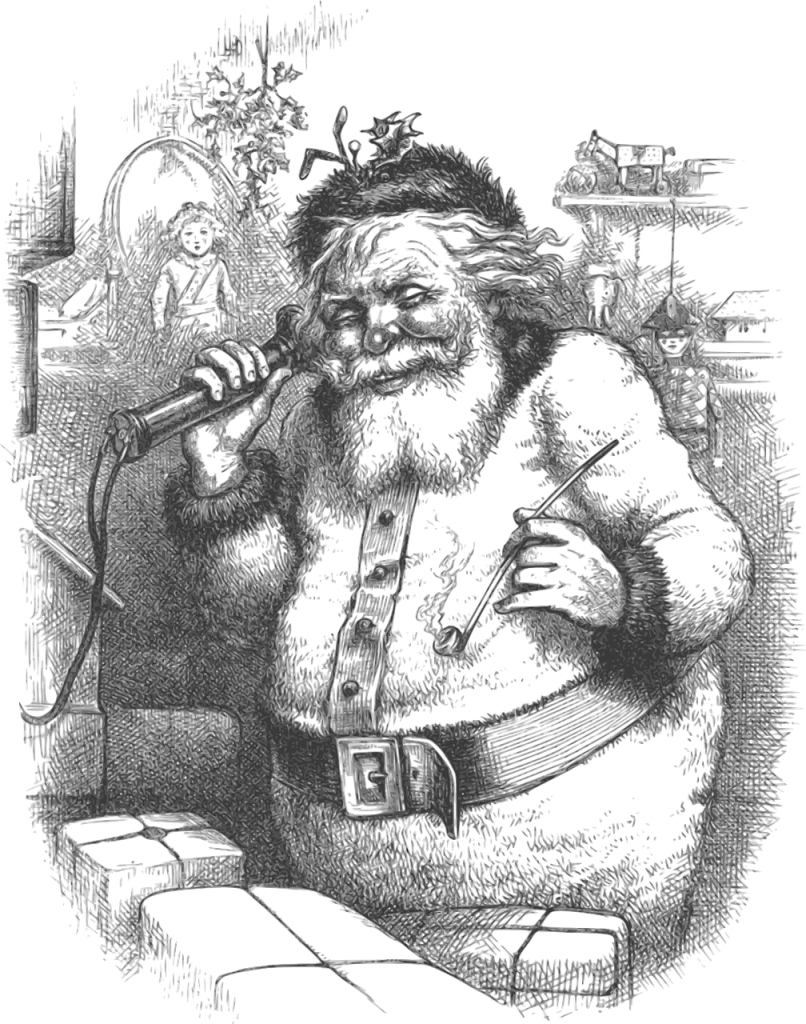Thomas Nast: A German-American Icon and the Father of American Cartooning
GERMAN HERITAGE USA | AFFILIATE DISCLAIMER: This post may or may not contain affiliate links which means we may receive a commission for purchases made through links. We will only recommend products that we have personally used or that we truly trust. Learn more on our Private Policy and Disclaimer Page located under our Terms Of Service tab above.
In the vibrant melting pot of American history, one cannot ignore the significant contributions made by individuals of diverse backgrounds. Among these notable figures is Thomas Nast, a German-American artist and political cartoonist who left an indelible mark on the landscape of American journalism during the 19th century.
This blog post explores the life, achievements, and enduring legacy of Thomas Nast from the unique perspective of his German heritage and the impact he had on shaping American political discourse and of course, Santa Claus himself.

Early Life and Immigration:
Thomas Nast was born on September 27, 1840, in Landau, in the Kingdom of Bavaria, now part of modern-day Germany. His family emigrated to the United States when he was just six years old, seeking refuge and a better life in the wake of political turmoil in Europe. The Nast family settled in New York City, where young Thomas’s artistic talents began to flourish.

Early Career and Rise to Prominence:
Nast’s artistic abilities did not go unnoticed. His passion for drawing led him to a position at Frank Leslie’s Illustrated Newspaper, where he quickly gained recognition for his skillful illustrations. However, it was at Harper’s Weekly, a prominent publication of the time, that Nast would truly make his mark.
Nast’s political cartoons became a powerful force in shaping public opinion during the tumultuous years of the Civil War. His drawings, filled with symbolism and satire, captured the attention of a nation torn apart by conflict. Nast’s ability to distill complex political issues into accessible and visually striking images earned him the title of “The Father of the American Cartoon.”
The Symbolic Legacy of Santa Claus:
One of Nast’s enduring contributions to American culture is his creation of the modern image of Santa Claus. Drawing on his German heritage, Nast depicted Santa as a rotund, jolly figure with a long white beard, clad in a red suit. This iconic portrayal of Santa Claus, influenced by the Germanic folklore figure of Sinterklaas, has become the universally recognized image of the holiday season.

Nast’s Santa Claus illustrations not only brought joy to readers but also contributed to the popularization of Christmas traditions in the United States. Through his art, Nast helped shape the cultural fabric of America, blending his German roots with the evolving traditions of his adopted homeland.
Political Satire and Influence:
As a political cartoonist, Nast utilized his skills to advocate for social justice, expose corruption, and champion the causes he believed in. His cartoons played a pivotal role in shaping public opinion on issues such as civil rights, corruption in government, and the Reconstruction era.
Nast’s famous depictions of the Tammany Hall political machine in New York City, led by the notorious Boss Tweed, were instrumental in exposing and ultimately dismantling the corruption that plagued the city. His cartoons, filled with intricate details and sharp wit, were a powerful tool for social commentary and a catalyst for political change.
Timeline of Key Events:
- 1840: Thomas Nast is born in Landau, Bavaria.
- 1846: The Nast family immigrates to the United States, settling in New York City.
- 1854: Nast begins his career as an illustrator at Frank Leslie’s Illustrated Newspaper.
- 1862: Nast joins Harper’s Weekly, where he gains national prominence for his political cartoons during the Civil War.
- 1863: Nast creates his first illustration of Santa Claus, shaping the modern image of the holiday icon.
- 1871: Nast’s cartoons expose the corruption of Boss Tweed and the Tammany Hall political machine in New York City.
- 1886: Nast’s impact on American culture is solidified as his depiction of Santa Claus becomes widely popularized.
Thomas Nast’s journey from a small town in Bavaria to the pages of American history is a testament to the power of immigrant stories and the influence of diverse perspectives on shaping a nation.

His legacy as a pioneering political cartoonist, advocate for social justice, and creator of the modern Santa Claus continues to resonate today.
Through the lens of his German heritage, Nast left an indelible mark on American culture, contributing not only to the world of journalism but also to the rich tapestry of traditions that define the United States.
